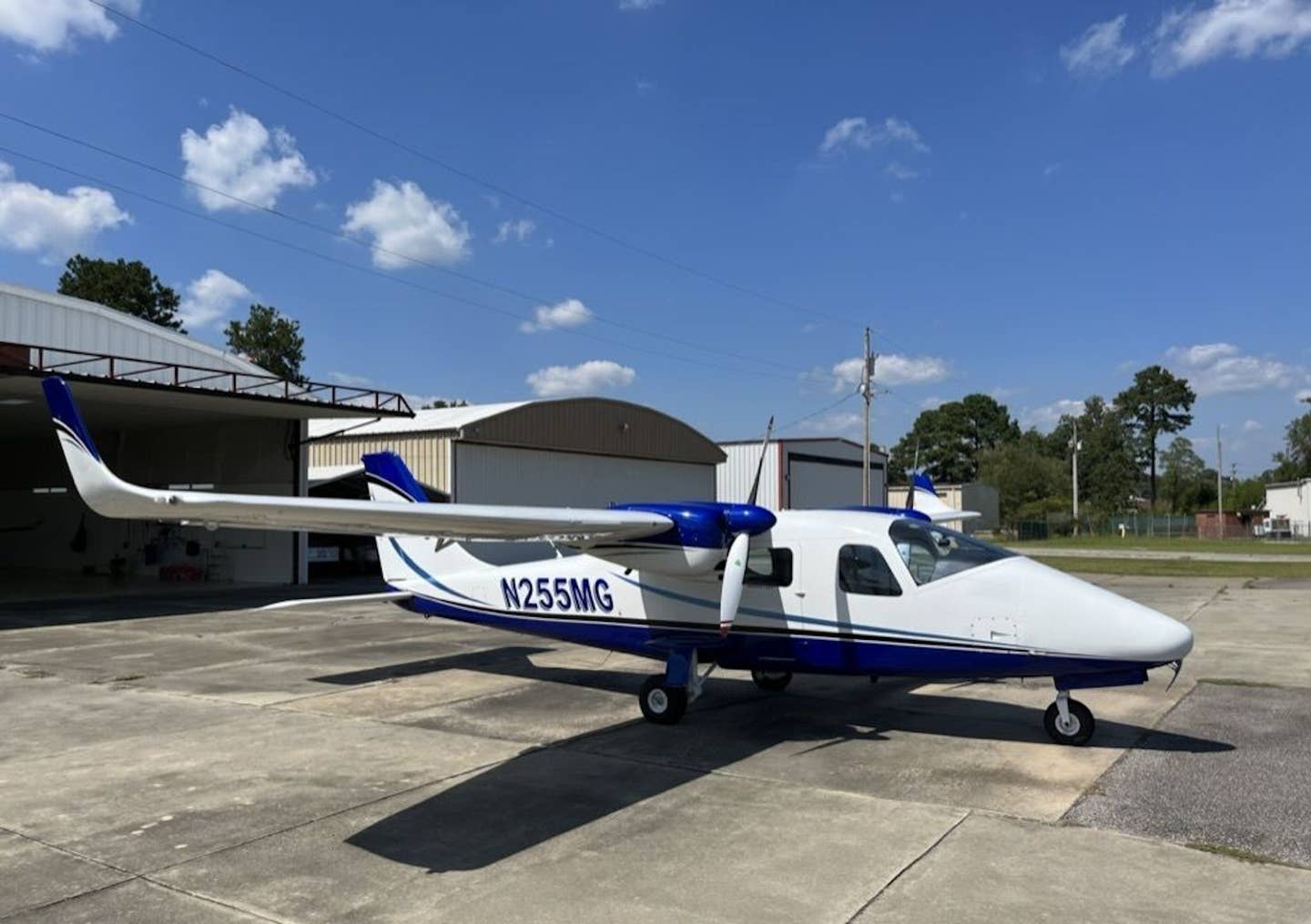We Fly: BRM Aero Bristell SLSA
The two-seat cruiser might be heavy, fast, and priced at a premium—but that’s okay.
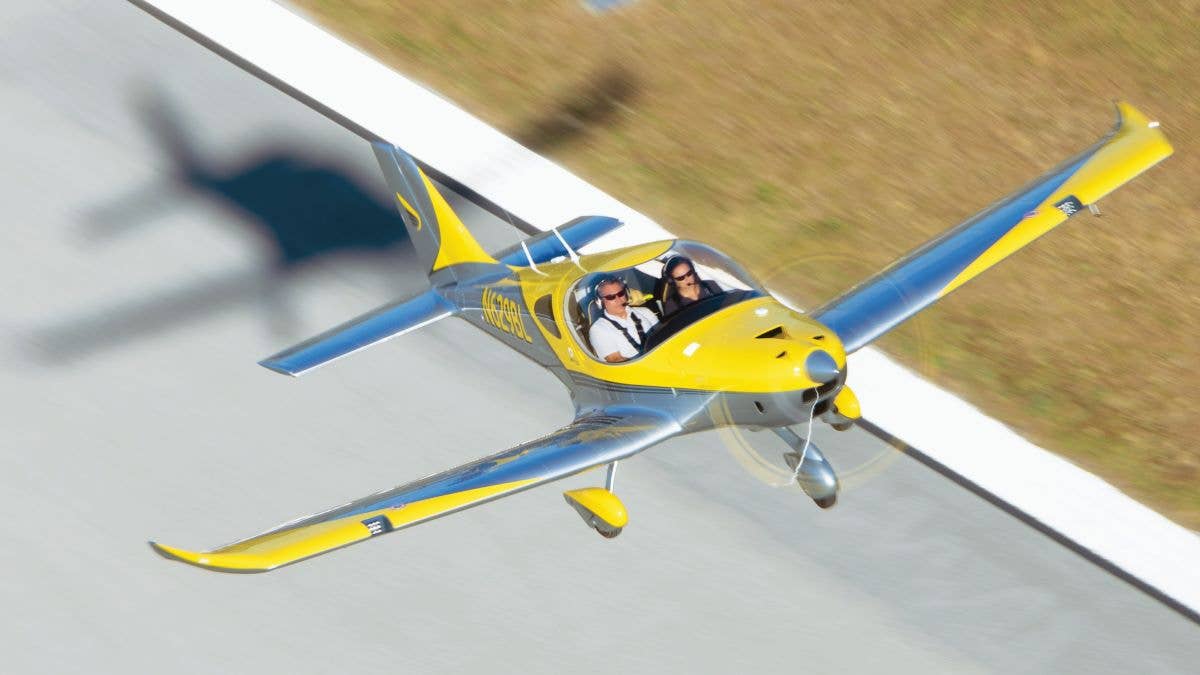
[Credit: Leonardo Correa Luna]
Sitting next to a posse of Cirrus SRs on the ramp at the Naples Airport (KAPF), the Bristell SLSA looked right at home—like a speedy little brother ready to run around and make trouble. But that’s not the airplane’s DNA at all. Instead, the combination of responsive yet solid flight controls, respectable climb performance, and advanced avionics on the flight deck mean it serves as a great two-person cross-country flying machine—or a fine way to build skill towards an instrument rating and competence to fly heavier, faster aircraft.
If you're not already a subscriber, what are you waiting for? Subscribe today to get the issue as soon as it is released in either Print or Digital formats.
Subscribe NowA Cross-Country Machine
That ’s exactly the market space Bristell’s U.S. importers and sales representatives seek to serve. BRM Aero—which builds the Classic and its special light sport aircraft (SLSA) version—is based in the Czech Republic. Roughly 800 models have been delivered globally, with 100 in the U.S. flown by private owners and flying clubs.
Bristell national sales manager John Rathmell thinks the model has found an excellent niche. Rathmell explained the SLSA: "It just fits in as an excellent all-around airplane for multiple reasons. Quality, performance, comfort, and cost efficiency—without the need for a medical.”
BRM Aero launched the SLSA 10 years ago in a customizable way, with a series of engine and avionics choices to select depending on where the airplane is based and the specifics of the mission. We flew two of the SLSA versions, both IFR-ready, with the higher-powered, turbocharged Rotax 915iS option.
With the wide cockpit—130 cm or 51.2 inches—and clear expanse of canopy, the SLSA feels from the outset more like a cross-country machine that has been designed with comfort in mind. For example, the thoughtfully placed vents (an option) and the ability to taxi with the canopy open give relief on hot days. Rathmell cautions, "If you want to load the plane up with a ballistic recovery system, long-range tanks, and IFR avionics, you must keep in mind the 1,320-pound LSA weight limit has not yet changed, so you can find yourself bumping up against the max weight during the build spec phase."
On the Bristell website, design options just scratch the surface of what is possible. It also lends itself to browsing through the company's other models, the B23 and B23 Turbo, and the upcoming high-wing B8. When MOSAIC passes, BRM is positioned to serve U.S. customers with faster, heavier aircraft that suit the cross-country market with even greater flexibility.
A. The Garmin G3X Touch provides the interface for most functions of the aircraft’s brainpower.
B. The throttle control sits next to the hand-actuated braking system.
C. The rudder pedals are adjustable while the seats are fixed in place, giving a comfortable yet sporty ride in the airplane.
D. The SLSA models flown for this report come with a Garmin autopilot and enhanced stability protection (ESP) to help keep the pilot upright in the event of an upset.
E. The angle of attack presentation is customizable by the pilot, and the entire glare shield’s red LED lighting flashes on brightly when an exceedance is imminent. You cannot miss it.
Power Up Front
The SLSA series comes from the factory with a choice of Rotax engines. The baseline 912 ULS delivers 100 hp on a normally aspirated powerplant with a reduction gearbox, and it creates a standard LSA that most folks understand and complies with ASTM standards as well as the FAA’s light sport guidelines in the U.S.
The basic empty weight of the SLSA model is 725 pounds, and is designed for a maximum takeoff weight of 1,320 pounds (roughly 600 kg), allowing for operations in the EU in the UL category as well.
However, the enticing 915iS in the SLSA prom-ises more power, speed (at altitude), and operational flexibility. The turbocharged engine offers up to 141 hp (135 hp at max continuous power and 5,500 rpm), allowing the LSA to slide into the outside lane. That extra capability up front translates into a wider performance margin—also benefiting from the SLSA's 100-pound lighter empty weight than its competitors. The four-cylinder 915iS integrates a beefier reduction gearbox and supports the more advanced electrical system needed to power the SLSA's avionics. The engine also prefers an MTV-34-1-A hydraulically adjustable three-blade constant-speed propeller. However, the regs require a ground-adjustable prop. We flew with both the DUC 4-blade and Sensenich 3-blade options, with the DUC giving a bit more speed in cruise.
Brains—And Safety Modes
On the flight deck, the Bristell LSA features a standard package tailored to suit customer needs within the personal transportation realm. The panel is designed around dual Garmin G3X Touch integrated flight displays. Options include the Garmin 750, dual remote radios, audio panel and intercom, and a G5 electronic flight instrument to provide additional backup. A GMC507 autopilot panel provides 3-axis functionality. With the magic boxes up front, the full enhanced stability protection (ESP), Safe Glide, XM weather and music, and angle of attack (AOA) info comes along, enabled by the Garmin avionics suite and a heated AOA probe.
The safety modes can be configured to present data on the display(s) in various ways, and ESP maybe turned off to facilitate the advanced maneuvering required for flight training—or, as in our case, a thorough demo flight profile to fully explore the performance envelope.
First Take
Rathmell wanted to introduce me to the model prior to our date down south for the photo mission, so he flew a customer airplane over from the company’s U.S. headquarters in Lancaster, Pennsylvania. N247BW came dressed a bit differently in a red, white, and blue American flag-inspired color scheme.
With the steerable nose wheel and a hand-actuated braking system, it didn’t take long for me to get the hang of taxiing and ground maneuvering. We also briefed the emergency use of the BRS ballistic recovery system, with its bright red aluminum handle located at my right knee.
It was a bumpy day in the traffic pattern, with winds gusting in the high 20s, generating rough air down low. We took three trips around—one demo landing, one with me on the controls and Rathmell coaching, and one on the long runway to demonstrate the 90-degree-crosswind prowess of the airplane, which is significant.
It was a great way to judge how the model handles moderate chop, like a much heavier airplane. With the tightly-coupled, center-mounted control stick low-slung in my lap, it was natural to brace against my inner legs to dampen erratic movement caused by the chop. And we vowed to fly more in better conditions.
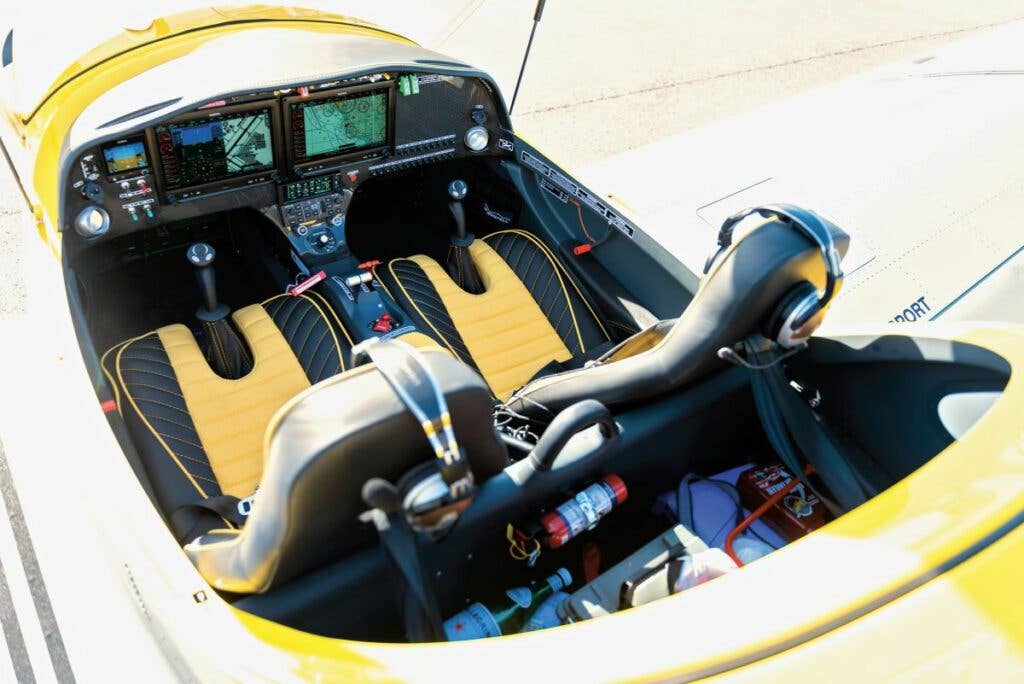
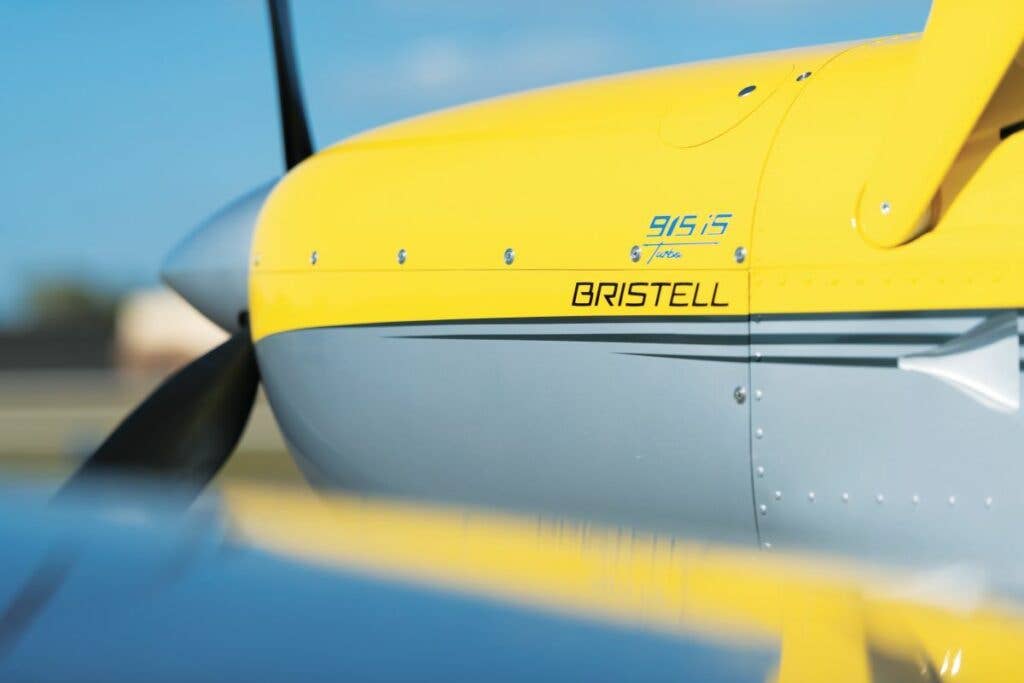
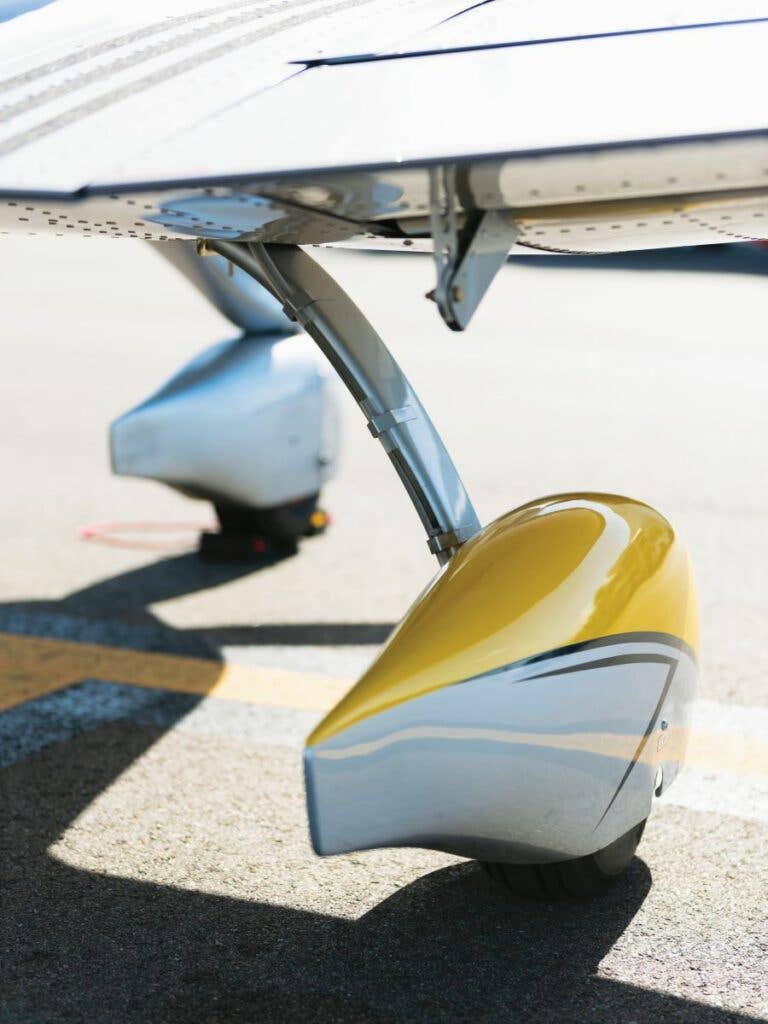
The sporty interior can feature high-voltage styling , while the Rotax 915iS up front delivers the goods. [Credit: Leonardo Correa Luna]
Flying Style
The coastline south of Marco Island, Florida, shows few signs of the devastating Hurricane Ian that pummeled its way through the Fort Myers area to the north. A few mangroves reveal tumbled-over trunks and branches in bunches teetering right above the level of the gulf waters that inundate southwestern Florida.
We can see this clearly as we circle lower and lower—1,000 feet, then 800 feet above the water—to capture the backgrounds against which the highway-stripe-yellow and silver-gray mantle of the Bristell we’re flying will surely pop, accentuating its sleek and speed-parlaying lines.
During the aerial photo mission, Rathmell flies off the AirCam, then hands the controls over to me so that I can see how the Bristell SLSA handles in close formation flight. This is where you find out how deftly you can manage the throttle in fine increments and how balanced the controls feel in slow flight—because we ask strange things of the ailerons, rudder, and elevator to stay on station and make the airplane do what the photographer asks.
The throttle is not big even in my relatively small hands, and fine movements are possible but perhaps not as easy as when using a throttle lever with a longer throw. Still, the solidness of the stick means it takes intention to induce roll and pitch—and that’s a good thing. After the sun hits the horizon, sinking into the west, we’re done taking photos—but we still have at least 45 minutes before full-on darkness arrives. So Rathmell and I break off and climb so that I can taste the “high work”: the maneuvers that form the baseline of my process in sampling an airplane.
First off, our climb starts with setting the power back up from station-keeping to max continuous (5,500 rpm) so that I can see a climb at best rate (84 kias)—we get an average of about 1,400 to 1,600 fpm from 1,500 feet to 3,500 feet msl. Once at altitude, I set airspeed below VA (97 kcas) to get my groove together for a couple of steep turns to the left and right.
Then it’s on to slow flight, and I relax the throttle back to bleed off airspeed while I hold a level attitude. We’re aiming first for 75 kias, the top of the white arc, so we can deploy flaps, incrementally to full. Doing so induces almost no pitching moment—a point Rathmell had demonstrated on one of our takeoffs on the earlier flight by showing what a non-event it was if you forget to bring the flaps up before you start a takeoff roll and dump them all at once right after takeoff. Those flaps—along with the stabilizer—are large and efficient. The airplane wallows around a bit at low speed—the AOA gets cross with us, and the glare shield’s red LED under-panel lighting flashes on. You can’t miss the fact you are deep into the low end of the scale. It takes a sharp pull back to get the airplane to break in the power-off stall, and it’s more of a mush at roughly 43 knots on the tape. With power on, there’s a wing drop to the left for us, at about 47 knots indicated.
I also put the sporty airplane through a few back and forths in lazy 8s to feel the Bristell’s control coupling and arc through low speed to high as we slice an 8 on its side through the horizon. The view from the left seat allows for a broad look around, with no struts. We level at 3,000 feet and set power at 4,400 rpm and 23.3 inches for the cruise back to KAPF, giving us 36 percent power. We’re loafing along at 103 knots indicated (109 ktas) as a result. We have been sipping fuel all along, but this shows us at 4.5 gph in eco mode—full power translates to 10.5 gph. The wing tanks hold a total of 16 gallons (21.6 gallons with extended-range tanks) per side for an endurance of 6.5 hours plus VFR reserves at best economy power. All of my initial landings came together easily within 900 feet of ground roll on the runway—and the nearly-night landing back at Naples was even shorter.
BRM Aero Bristell SLSA
- Price (fully equipped, as tested): $366,000
- Engine: Rotax 915iS, turbocharged
- TBO (or equivalent): 1,200 hours
- Horsepower: 141 hp, maximum continuous
- Propeller: Sensenich 3-blade composite
- Seats: 2
- Wingspan: 9.13 m, 29.53 ft.
- Length: 6.45 m, 19.68 ft.
- Height: 2.28 m, 6.56 ft.
- Cabin width: 130 cm, 51.2 in.
- Baggage Weight: 55 kg, 121.25 lbs.
- Basic Empty Weight (U.S. SLSA): 725 lb.
- Max Takeoff Weight (U.S. SLSA): 1,320 lb.
- Basic Useful Load: 595 lb.
- Fuel: 120 liters/ 32 gal., 28.5 gal.usable (standard tanks); 43.2 gal. total(extended range tanks)
- Max Rate of Climb: 1,500 fpm
- Max Operating Altitude: 23,000 ft.
- Stall Speed (flaps extended): 43 kias
- Max Cruise Speed:120 ktas, at sea level,max continuous power
- Max Endurance: 6.5 hours plus VFR reserves at best economy power
- Takeoff Distance, Sea Level (over a 50 ft. obs.): 331 m, 1,086 ft.
- Landing Distance, Sea Level (over a 50 ft. obs.): 391 m, 1,283 ft
Interior Details
The two-seat airplane has low-slung seats, placing you in drive mode, with adjustable rudder pedals. The comfort factor is real, not just reported, with a cockpit layout that puts everything in reach. The baggage compartment is accessible in its entirety from the seats, with a 15 kg (about 33 pounds) capacity. Two wing lockers hold an additional 20 kg (about 44 pounds) apiece but cannot be reached in flight unless you pull a wing-walking move (not recommended).
The interior selections run from utility to luxury leather options, with a sporty theme informing the ones in those models we tested for this report. Details include map pockets and a stash box in the central armrest.
Every Bristell comes with a custom tool kit that Rathmell says is designed to facilitate happy cross-country flying, from minor maintenance adjustments to being able to tie down on unfamiliar ramps.
The Family Behind the Bristell
John Rathmell figures he now has as many hours in Bristell aircraft as anyone in the U.S. With more than 800 aircraft delivered worldwide, that distinction is sure to change in the coming years. The Czech company runs a boutique-style shop, crafting about 120 custom aircraft in total each year, with a couple dozen of those headed for the U.S. from its headquarters in Kuňovice. It’s a solid production run that ensures a personal touch on each airplane that’s built.
Family Founders
The name “Bristell” derives from Bristela, the surname shared by the father and son who established and run the company. Father Milan Bristela, founder and CEO, earned his degree in aircraft certification and production from the Antonín Zápotocký Military Academy in Brno, Czech Republic. He’s been in aviation since 1983.
The BRM models resemble another light sport airplane—the Sport Cruiser/PiperSport. Milan worked on that design with Czech Sport Air Works prior to its U.S. introduction. However, Piper’s LSA partnership never gained traction, and Milan knew he could improve on that design with his own evolution. Therefore, with son Martin, he founded BRM Aero S.R.O.in 2009 with the intention of creating LSA and ultralight category-leading aircraft for personal use and pleasure. Martin is a full partner and also the COO, with a background in racing automotive maintenance and the instrument/commercial pilot license he 's secured—and we expect he'll take the reins as his dad spends more time in the design department.
BRM Aero has produced a retract model, not available in the U.S., the Bristell RG, and a “spur gear” airplane, the Bristell TDO. The OEM built its own state-of-the-art facility at the Letiště Kunovice airport (LKKU). Today, it employs more than 130 people, and it plans to increase production by 50 in the next two years.
International Growth
The Bristelas had long set their sights on reaching farther than the EU’s borders with their designs, so in 2012, they connected with their first U.S. importers and continued that with the establishment of the relationship with Lou Mancuso, of Sport Flying USA, with whom Rathmell has partnered, along with Rich Maisano and others. They represent a steady support structure for the U.S. market, stocking new engines and significant parts inventory. Each aircraft comes with an 18-month, 200-hour factory warranty and post-warranty service plan, which includes mods as well as required maintenance and repair work.
The fit and finish of the models we tested speaks to why pilots have raved about the Bristell SLSA ever since.
Better Training
One key area in ensuring both the customer’s satisfaction and their safety lies in good training. After we flew, Rathmell handed me a challenge coin marking my induction into the ranks of Bristell pilots. On the reverse, it’s stamped with the acronyms “DFGAP,” “GPA,” and “PLC.” These mnemonics stem from Mancuso’s “Landing Doctor” training program developed for light sport aircraft and refined for the Bristells. They stand for “defined go-around point,” ground proximity awareness,” and “personal limitations checklist.”
Mancuso and Rathmell intend for pilots to carry this tangible reminder in their pocket—and take those safety points to heart.
This article was originally published in the April 2023, Issue 936 of FLYING.

Subscribe to Our Newsletter
Get the latest FLYING stories delivered directly to your inbox



